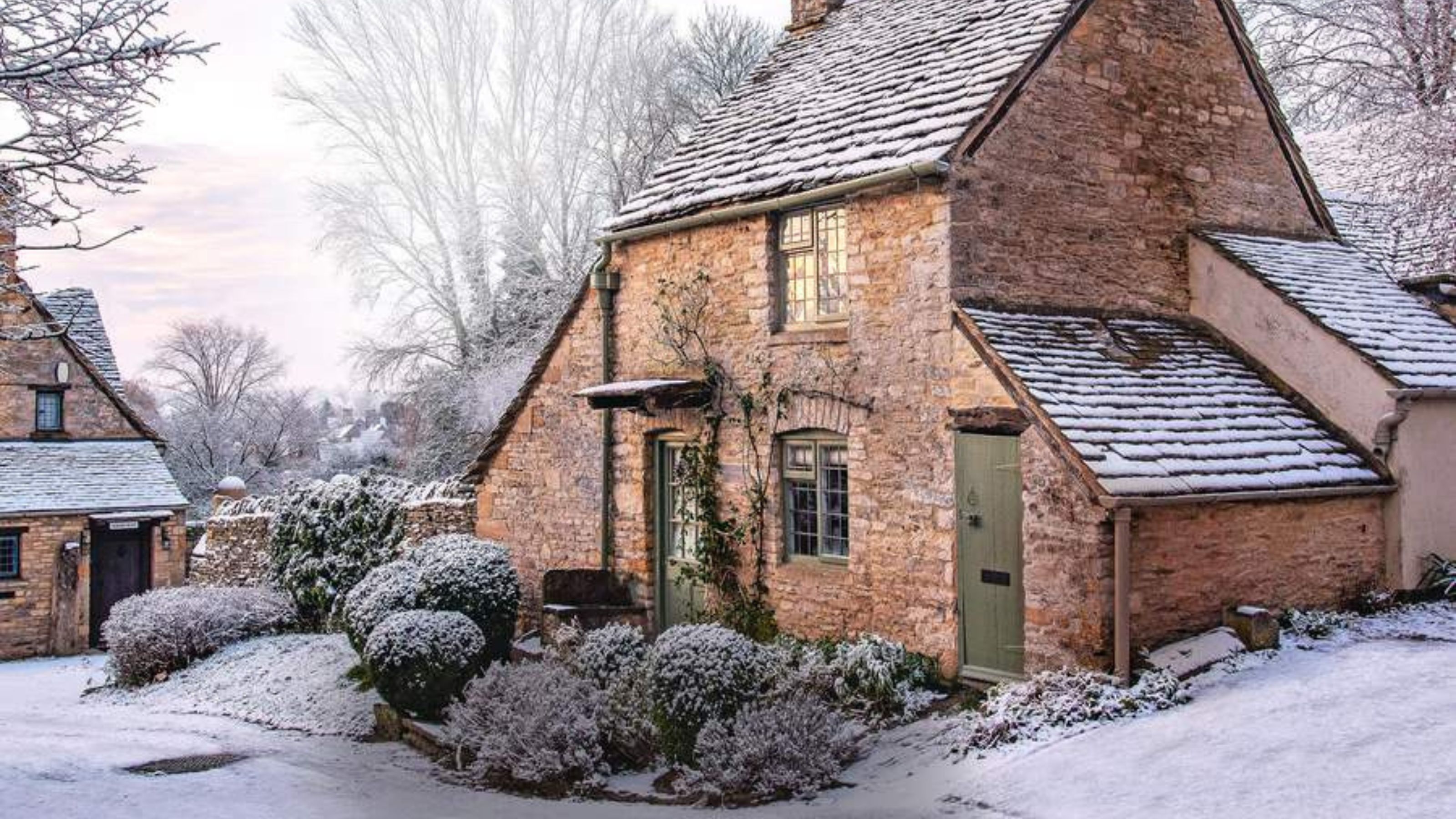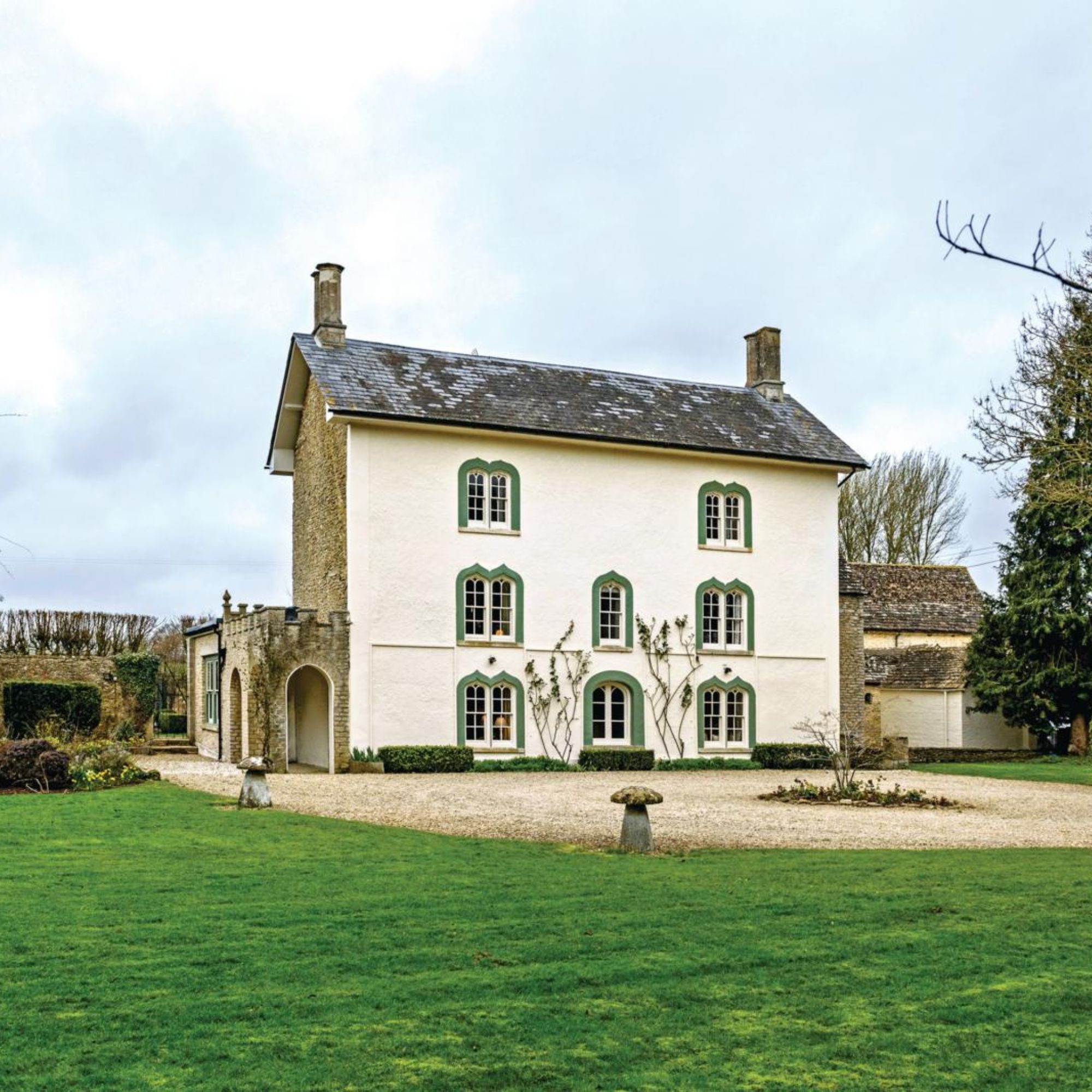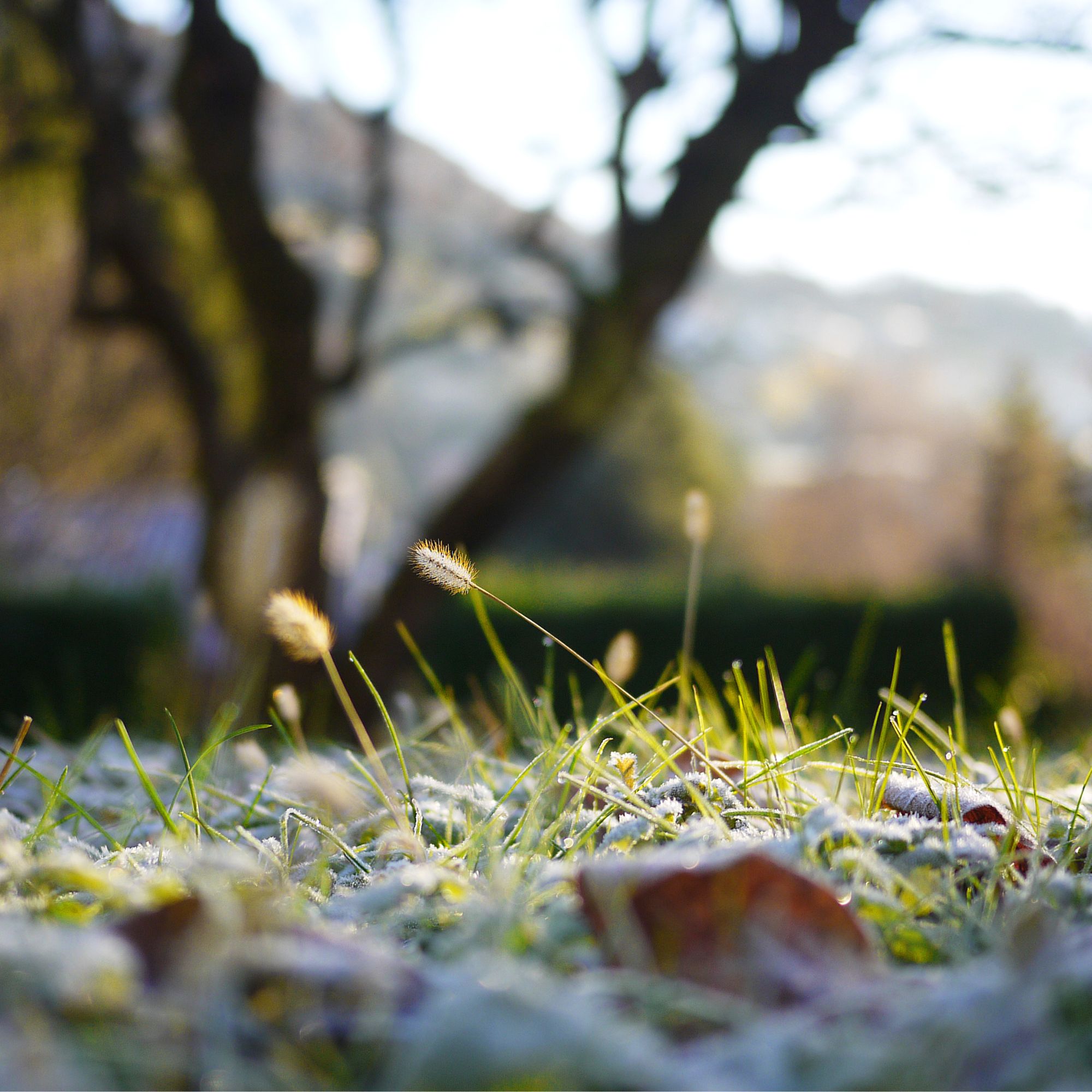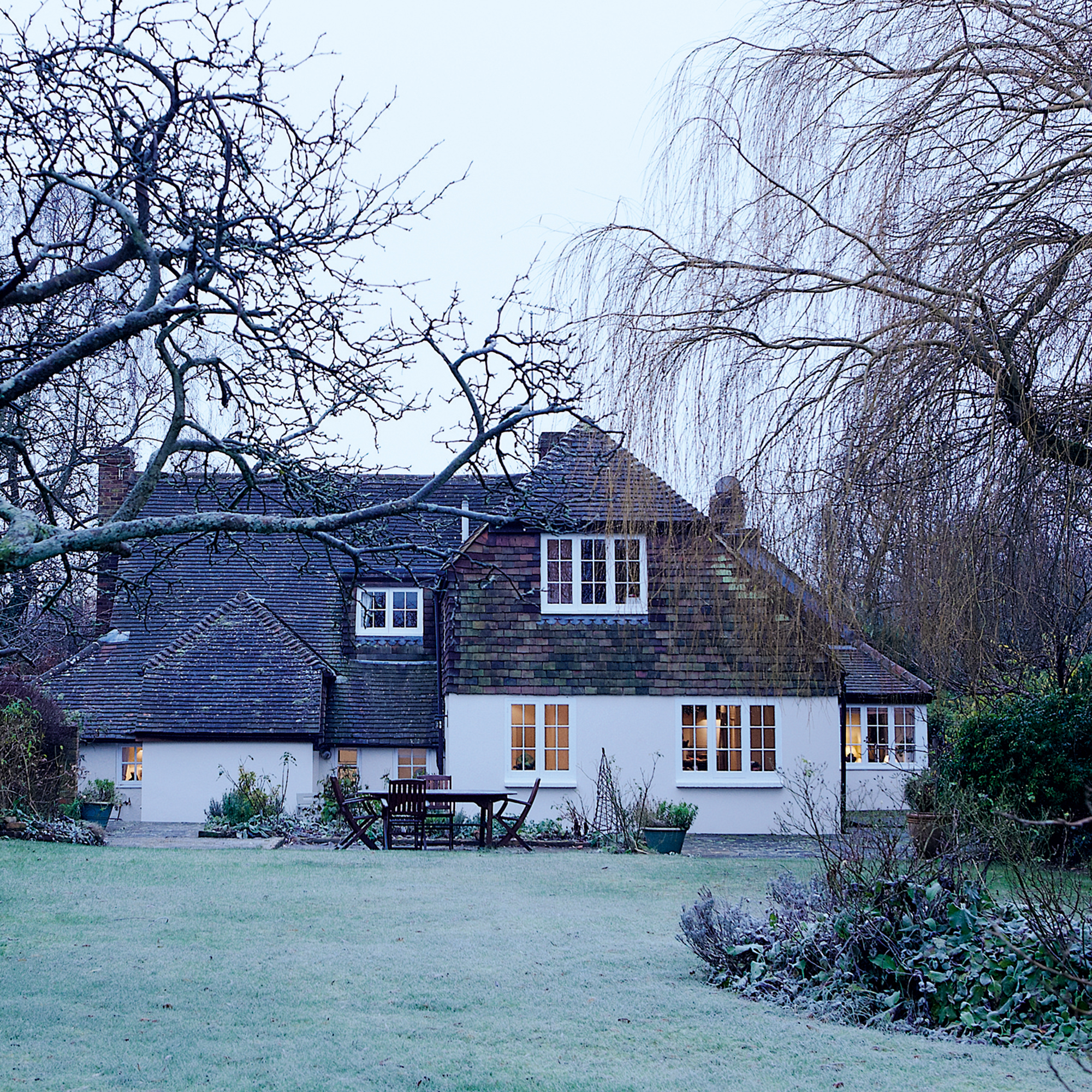You should never walk on grass when it’s frosty – experts agree it's a major lawncare mistake
Keen to avoid frost damage to your lawn? Here's what you need to remember


Did you know that you should never walk on grass when it's frosty? Ever?
It's one of those lawn care tips that every gardener – no matter how green – should know, but many don't learn the lesson until it's too late.
If your pristine lawn ideas are the apple of your eye, then, we're here to remind you that winter climes can wreak havoc on your grass at this time of year – especially if you don't think about where you're stepping.
Never walk on grass when it's frosty
Many of us have spent ages researching the best ways to protect plants from killer frosts, but it's easy to forget that our lawns are at risk, too.
'Frost on your lawn’s surface will not do much damage,' says Chris McIlroy at The Grass People. 'However, you need to be careful not to walk on, crush, or flatten the blades of grass, which could hurt your lawn and stunt its growth come spring!'

Now, you'll likely already know that the Met Office has warned of a 'potential snow event' by the end of this week, alongside widespread overnight frosts and foggy mornings.
And, while 'one frosty morning in a week shouldn’t do too much damage to your lawn', Chris says that it's important to consider the lasting effect that frost has on your grass when it becomes a regular occurrence.
Get the Ideal Home Newsletter
Sign up to our newsletter for style and decor inspiration, house makeovers, project advice and more.
'Remember that frosty grass is weakened when you (or your pets) walk on it,' he says, 'and this is one of the reasons patches of dead grass appear on your lawn'.

It's for this reason that gardening expert and director of Easy Garden Irrigation, Sean Lade, has warned gardeners that they should never walk on grass when it's frosty.
'Frosty grass blades will be frozen from the inside out and are very brittle,' he says.
'The crunching sound you hear while walking on it is the sound of grass blades breaking. Also, you’ll notice that the grass doesn’t feel springy like it does in spring and summer.'
Sean adds that, when you tread on frozen grass, all the broken glass blades compact down and cover the grassroots. 'This prevents the roots from getting the water and oxygen it needs to stay healthy,' he says. 'When spring comes around, you’ll see yellow patches of dead grass that will not grow back as quickly.'
So, how can we stop frost damaging our lawn? And what steps can we take – other than remembering to never walk on grass when it's frosty, that is – post-frost to avoid any lasting issues? Let's dive on in...
Pre-frost advice:
1. Apply a lawn fertiliser
One of the easiest things we can do to protect our lawn from frost damage is to give it a little TLC before those cold weather snaps roll around.
'Just like us, your lawn has an immune system that needs to be built up over time,' says Chris. 'You can aid this by applying a granular autumn/winter fertiliser that is high in potassium to give your lawn up to 4-months of protection from the cold weather of winter.'
A1 Lawn Ultimate Autumn Winter Lawn Fertiliser I from £11.99 at Amazon
This potassium-rich fertiliser feeds your grass with all the nutrients to keep it lush and healthy throughout the tougher colder months.
Alternatively, Chris says you can use a quick-release autumn/winter liquid fertiliser like this one from The Grass People.
'It is fast-acting and gets to work instantly after applying, feeding your lawn an intensive feed of nutrients for 6-8 weeks,' he says, noting that both options will help to strengthen your grass's resilience to disease and frost, ensuring it's healthier, greener and in better condition after winter ends.
2. Don't mow your grass too short
Monty Don wants you to let your grass grow long this winter, and so does Chris: longer grass boosts insulation, which in turns helps protect the roots of the grass from extreme temperature fluctuations, keeping them healthier during the colder months.
'When planning your last mow of the season, make sure to mow a little higher than your usual setting,' says Chris.
'You also need to make sure that your mower blades are sharp. Be aware that cutting on a low setting with a blunt blade can sever the cells within your grass, which stops them from being able to repair and grow again.'
Peter Chaloner, managing director of Cobra Garden Machinery, agrees. 'During winter, grass is more vulnerable so taking blades to it can damage it forever. Instead, let the mower rest and be ready to go again in spring with a little and often approach so as not to shock it,' he says.
3. Allow frost to settle evenly

As well as remembering to never walk on grass when it's frosty, Peter says it's also a good idea to rearrange your garden furniture to ensure the frost can settle evenly when it does hit.
'To avoid lasting damage to your lawn during winter, make sure any snow or frost can settle evenly over the grass to avoid any patchy spots come springtime,' he advises.
'Items such as garden furniture, toys, plant pots, leaf fall and piles of grass cuttings prevent whatever sunlight is possible from reaching the grass, starving it of all important nutrients that make it thrive throughout spring and summer.'
Take the time, then, to remove these items before the most severe winter weather hits.
Post-frost advice:
1. Don't walk on the lawn when it's frosty
We've said it before and we'll say it again: never walk on grass when it's frosty!
'The most obvious way to stop frost from damaging your lawn is not to add to the problem. This means staying off the lawn when there is frost – and this goes for your pets too!' says Chris.
'Grass blades that are walked on when frozen can split and break. And when your lawn wakes up again in spring, it can appear yellowed/brown or dead.'
2. Wait to repair the damage

If your lawn does emerge with frost damage in spring, you can, of course, repair it – but it's best to wait.
'The recovery of a lawn that has been affected by frost and cold winter weather depends on the extent of the damage,' says Peter.
'When the temperature rises, it's best to wait and allow the grass to recover on its own. In many cases, the grass can bounce back even if it appears wilted or brown. However, if the damage is severe and there are large bare patches, consider overseeding those areas with a suitable grass seed.'
FAQs
How do I fix frost damage on my lawn?
It is best to wait until the springtime to fix any frost damage to your lawn, as it will give you time to assess the situation (and avoid you forking out on fertilisers only to be hit by another cold snap!).
However, as is so often the case with things, prevention is the best way forward.
'If you are a proud owner of an immaculate lawn, I would definitely suggest not treading on it – even a small dog walking over it can snap the blades,' says Sean.
'If you must walk on the grass, wait until after the mid-morning sun has melted the frost and warmed up your grass. And, if you absolutely cannot wait until the frost has melted, borrow a tip from a greenkeeper and use a sprinkler with warm water to melt away the frost.'
As well as remembering to never walk on grass when it's frosty, Peter suggests you' water and fertilise the lawn as needed, and aerate the lawn to relieve any compaction.'
Will grass come back after a freeze?
While you may notice some unsightly brown or yellow patches in your grass after a frost, take heart from the fact that the root system will be able to continue growing healthy grass. In time, the damage will heal.
'With grass being as hardy as it is, you don’t need to panic if someone walks over your lawn,' says Sean.
'You can expect it to recover from the damage, but it will be later in spring that you can enjoy a perfect lawn again. If you find damage, make a note in your calendar to reseed the lawn next spring.'
Should you cut grass when frosty?
While it's tempting to get out and cut the grass when it's quiet, remember that you should never do so when it's frosty.
'The cold mornings of winter are a treasure,' says Sean. 'The frosty grass blades sparkle like a winter wonderland. The temptation to feel the crisp, frozen lawn under your feet can be too much to resist. But we must.'
Remember: frost makes your grass is very stressed, and walking on your frost-covered lawn can cause long-term damage... let alone mowing it!
So, there we have it: if you love your lawn, take care to never walk on grass when it's frosty – otherwise you will have to spend your springtime repairing the damage.
We'd much prefer to use all of the advice above to cut out the extra work, quite frankly.

Kayleigh Dray became Ideal Home’s Acting Content Editor in the spring of 2023, and is very excited to get to work. She joins the team after a decade-long career working as a journalist and editor across a number of leading lifestyle brands, both in-house and as a freelancer.
-
 My go-to Ninja coffee machine is on sale for Easter weekend
My go-to Ninja coffee machine is on sale for Easter weekendIt makes coffee shop quality achievable at home
By Molly Cleary
-
 When to plant out annual flowering plants for vibrant, colourful garden borders – and give them the best start, according to experts
When to plant out annual flowering plants for vibrant, colourful garden borders – and give them the best start, according to expertsNot sure when to plant out annual flowering plants? We've got you covered...
By Kayleigh Dray
-
 I'm a kitchen decor editor and didn't like this tableware trend - until I saw H&M Home's designer-look plates
I'm a kitchen decor editor and didn't like this tableware trend - until I saw H&M Home's designer-look platesThey made it easy to justify a new crockery set
By Holly Cockburn
